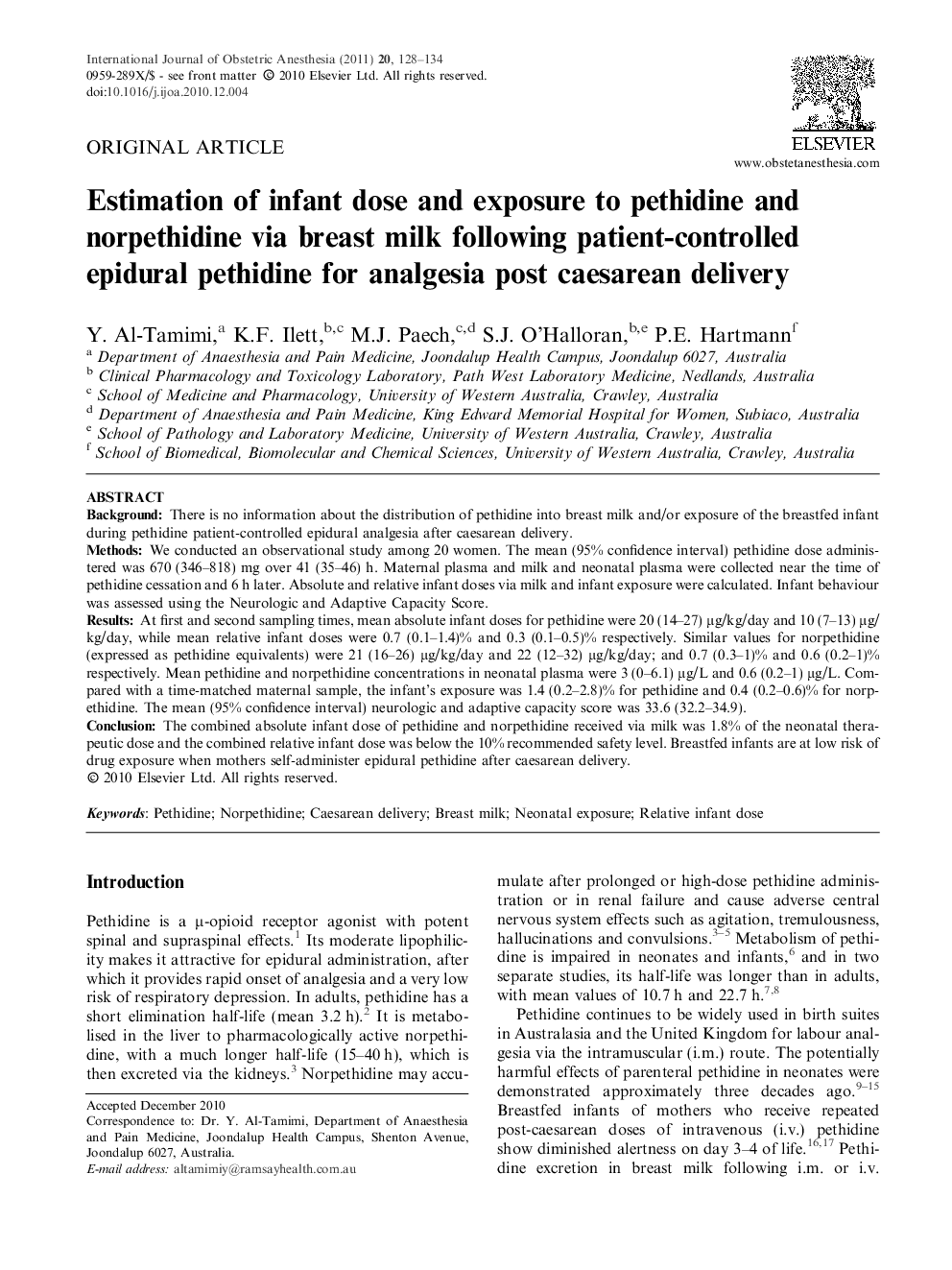| Article ID | Journal | Published Year | Pages | File Type |
|---|---|---|---|---|
| 2758018 | International Journal of Obstetric Anesthesia | 2011 | 7 Pages |
BackgroundThere is no information about the distribution of pethidine into breast milk and/or exposure of the breastfed infant during pethidine patient-controlled epidural analgesia after caesarean delivery.MethodsWe conducted an observational study among 20 women. The mean (95% confidence interval) pethidine dose administered was 670 (346–818) mg over 41 (35–46) h. Maternal plasma and milk and neonatal plasma were collected near the time of pethidine cessation and 6 h later. Absolute and relative infant doses via milk and infant exposure were calculated. Infant behaviour was assessed using the Neurologic and Adaptive Capacity Score.ResultsAt first and second sampling times, mean absolute infant doses for pethidine were 20 (14–27) μg/kg/day and 10 (7–13) μg/kg/day, while mean relative infant doses were 0.7 (0.1–1.4)% and 0.3 (0.1–0.5)% respectively. Similar values for norpethidine (expressed as pethidine equivalents) were 21 (16–26) μg/kg/day and 22 (12–32) μg/kg/day; and 0.7 (0.3–1)% and 0.6 (0.2–1)% respectively. Mean pethidine and norpethidine concentrations in neonatal plasma were 3 (0–6.1) μg/L and 0.6 (0.2–1) μg/L. Compared with a time-matched maternal sample, the infant’s exposure was 1.4 (0.2–2.8)% for pethidine and 0.4 (0.2–0.6)% for norpethidine. The mean (95% confidence interval) neurologic and adaptive capacity score was 33.6 (32.2–34.9).ConclusionThe combined absolute infant dose of pethidine and norpethidine received via milk was 1.8% of the neonatal therapeutic dose and the combined relative infant dose was below the 10% recommended safety level. Breastfed infants are at low risk of drug exposure when mothers self-administer epidural pethidine after caesarean delivery.
